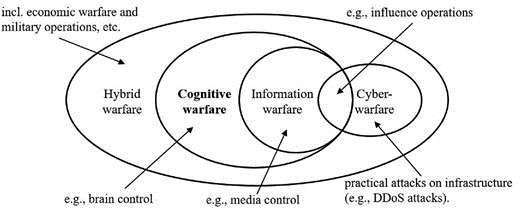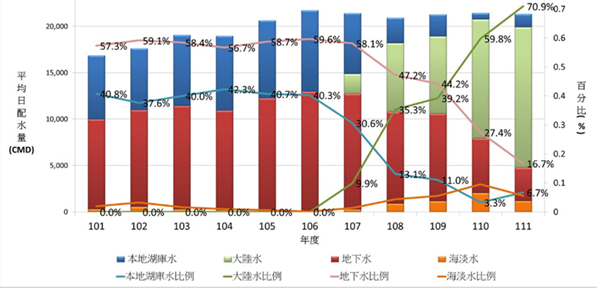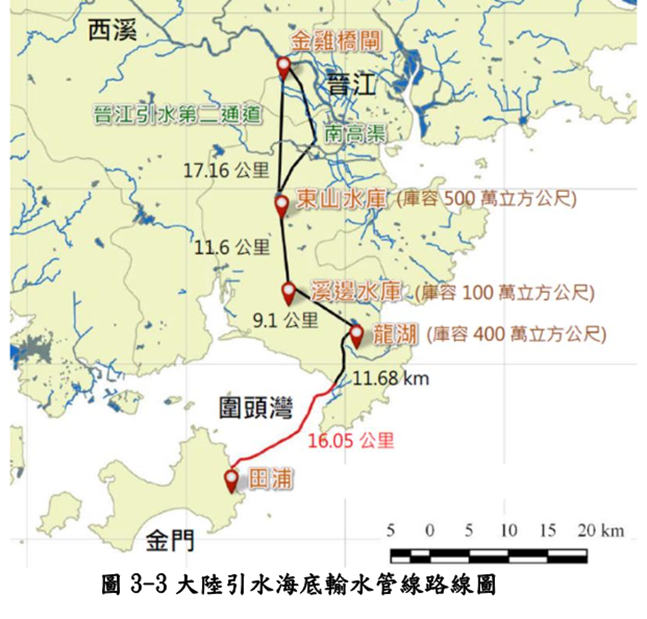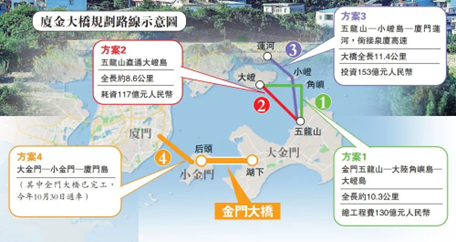CHINA’S INFRASTRUCTURE WARFARE AGAINST KINMEN
onstruction in the background. (Murphy, 2022) 
Image depicting anti-landing spikes to deter a Chinese amphibious invasion in the foreground and the Kinmen-Lieyu Bridge under construction in the background. (Murphy, 2022)
Written by Ian Murphy.
Image credit: author.
Geopolitical adversaries have increasingly focused on targeting critical infrastructure like energy, transportation, and communication networks to weaken a nation’s military capabilities. This form of hybrid warfare, known as infrastructure warfare, has garnered significant attention in recent years. However, its application to the China-Taiwan conflict, particularly concerning Kinmen County, remains under-examined. China’s development of the China-Kinmen water pipeline and the proposed Kinmen-Xiamen Bridge project raise concerns about its use of infrastructure as a tool of political coercion. While often overshadowed by broader cross-Strait tensions, this approach poses a significant threat to Taiwan’s security and autonomy.
Defining Infrastructure Warfare
Traditionally, infrastructure warfare targets critical infrastructure to weaken a nation’s military capability, readiness, and force projection. However, China’s approach in Kinmen utilizes infrastructure not just for a military advantage but also as a tool for cognitive warfare, subtly manipulating perceptions and dependencies to achieve political goals. The challenge with applying this definition of infrastructure warfare to China’s hybrid warfare strategy against Taiwan is that it does not fully account for non-military gains or motives. Instead, we should think of infrastructure warfare as a part of China’s cognitive warfare strategy.
Cognitive warfare is a distinct form of conflict that targets the minds of populations rather than physical infrastructure that aims to manipulate perceptions, disrupt decision-making, and erode social cohesion. It represents a shift from traditional kinetic warfare, focusing instead on psychological and informational operations to achieve strategic objectives. Disinformation campaigns, social media manipulation, and economic pressure are common tools of cognitive warfare, exploiting vulnerabilities in human cognition. This approach is often employed alongside traditional military force, which allows actors to achieve their goals without overt escalation or direct confrontation.

The Chinese Communist Party’s cognitive warfare strategy is part of a larger hybrid warfare model that aims to achieve state objectives more ambiguously, with its approach in Kinmen exemplifying this strategic shift. While its infrastructure projects in the region offer tangible benefits like improved water supply, they also serve a deeper purpose – to subtly shape perceptions and foster a sense of dependence on the mainland. This gradual integration into China’s economic and social sphere aims to create a favourable environment for eventual reunification, push pro-unification narratives, and influence the population not to fight in a wartime scenario.
In the case of Kinmen County, China is not using infrastructure warfare to undermine Taiwan’s military readiness or force projection in the Taiwan Strait. Instead, they are using infrastructure investment to bring Kinmen closer to China, push pro-unification narratives, and influence the population not to fight.
Kinmen is Becoming Dependent on China for Social Services
China’s carrot-and-stick approach to Kinmen is a strategy that combines incentives (carrots) with punitive measures or threats (sticks) to influence to island’s political and economic ties to mainland China. Punitive measures have included the maintenance of a significant military presence near Kinmen, while China leverages its economic influence by restricting trade and tourism from Kinmen and Matsu by leveraging customs, military exercises, the control of maritime and air transportation routes, and even by conducting sand dredging operations around the islands.
After the lifting of martial law in Taiwan in the 1990s, Taiwan’s “Three Mini Links” (小三通) opened limited exchanges to create limited transportation, trade, and postal links between mainland China and Kinmen and Matsu. While these links were opened in 2001 with the aim of facilitating economic and cultural exchanges, the program opened Kinmen’s residents to an ever-intensifying Chinese cognitive warfare strategy and the promotion of China’s economic model as a competitor to Taiwan.
The most successful case study of China’s infrastructure warfare strategy is the establishment of the China-Kinmen water pipeline in 2018, which now supplies over 70% of the island’s water usage. This infrastructure project addresses Kinmen’s historical water scarcity and also highlights the concerning trend of China’s potential to weaponize critical infrastructure against Taiwan. Prior to the pipeline’s establishment, Kinmen relied heavily on unsustainable groundwater extraction and limited rainfall, resulting in environmental degradation and inadequate water supply. The pipeline, while a practical policy solution, inadvertently created a strategic vulnerability.

Chart depicting changes in Kinmen’s freshwater usage from 2012 (101) to 2022 (111). Since the completion of the China-Kinmen water pipeline in 2018, Kinmen’s reliance on water from China has increased to 70.9% (green), while its use of groundwater has dropped significantly to 16.7% (red).
With Kinmen’s water supply now predominantly controlled by China, the potential for political manipulation and disruption is evident. China’s increasing assertiveness towards Taiwan, coupled with warnings from the Mainland Affairs Council, has raised alarms about the weaponization of newly built critical infrastructure. Taiwan has learned from this and is beginning to carefully assess future cross-Strait infrastructure projects, such as the proposed Kinmen-Xiamen Bridge, through a lens of strategic defence. For existing infrastructure like the water pipeline, Taiwan must now play defence by focusing on building resilience against potential disruptions. To prepare for disruptions, Taiwan will need to develop alternative water sources, enhance freshwater storage capacity, rehabilitation and reduction of salinification in existing reservoirs, and implement emergency response plans in Kinmen.

Map published by Kinmen County Waterworks that depicts the China-Kinmen water pipeline that was built in 2018.
China has also capitalized on the political fractures caused by the Kinmen-Lieyu bridge project by promoting its own bridge project to link Kinmen and neighbouring Xiamen City. The Kinmen-Lieyu bridge project was a Taiwanese infrastructure project that now links Kinmen’s main island with the smaller Lieyu Island. Lieyu Island was previously only connected to Kinmen through a ferry, which had limited capacity and availability. Taiwanese politicians promoted the bridge project to improve the lives of Lieyu residents by providing access to essential services, healthcare, economic opportunities, and boosting tourism. However, the bridge faced criticism for going over time, over budget, and for failing to bring access to needed social services due to limited social services within Kinmen County itself, with residents needing to go to Taiwan’s main island for adequate access to healthcare and job opportunities.
The Chinese Communist Party has historically leveraged the development of cities like Shanghai and Xiamen as propaganda tools to showcase economic development and modernization, promote the Chinese Dream, and legitimize the CCP’s economic governance model that emphasizes the economic benefits of working with the CCP while discounting narratives of political control and national security concerns. So, when Taiwan’s bridge project failed to deliver the needed social services to Kinmen, Chinese media pushed narratives that preyed on Kinmen’s discontent with Taiwan’s governing model and investment in favour of a CCP economic and unification narrative.

A chematic map of the planned route of the Ximen-Kinmen Bridge with a translation of the four scenarios provided by Chinese media (大公報, 2020)
Taiwan’s Mainland Affairs Council, responsible for evaluating proposals involving mainland China, has rejected the Kinmen-Xiamen Bridge Project as a legitimate development under the Three Mini Links program due to concerns over the bridge’s potential negative impact on Taiwan’s national security, noting that the policies of the Chinese Communist Party have shifted from mild to doctrine focused on maximizing intimidation and suppression of Kinmen and Matsu, with the Kinmen-Xiamen Bridge acting as a stepping stone towards integrating Kinmen into Fujian Province.
Countering China’s Infrastructure Warfare
The first challenge in countering China’s infrastructure warfare against Taiwan is understanding the strategy. By framing infrastructure warfare as part of a hybrid warfare model in service to cognitive warfare, we can see how infrastructure will be used against Taiwan in an invasion scenario. So far, the China-Kinmen water pipeline and the proposed Kinmen-Xiamen Bridge project have been used to offer economic incentives, promote CCP governance, and sow distrust in the Taiwan government. In wartime, this incentive structure will become punitive if Kinmen resist Chinese claims.
China could potentially defeat Taiwan through a blockade by employing a combination of military and economic strategies aimed at isolating and weakening the island. Under such a blockade of Taiwan’s main island, Taiwan will be unable to continue flights and maritime transport to Kinmen. This strategy of anti-access area denial, combined with infrastructure integration, means that Kinmen’s only means of survival is found through an umbilical cord with China. With a new Taiwanese Presidential administration in power, the government will have to reexamine its current Kinmen defence strategy. Taiwan knows that it is unable to match China’s military and infrastructure modernization dollar-for-dollar, so it will need to find areas of comparative advantage to overcome its hybrid warfare strategy.
Ian Murphy has a background in national security and international business. He earned an MA in National Security Studies at American Military University and received a Taiwan Scholarship to study at National Taiwan Normal University, where he completed an MBA with instruction in Chinese. Ian currently works as a China Subject Matter Expert at SecuriFense Inc., where he helps organizations understand developments in China’s economy and foreign policy.
His recently published article TAIDE: TAIWAN’S COMMITMENT TO INNOVATION, SECURITY, AND GLOBAL TECH LEADERSHIP can be read here.
No comments:
Post a Comment